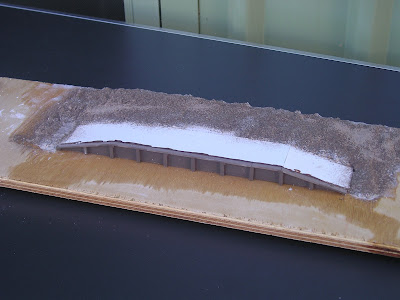Humula Station construction starts
Plus an auction & repair
Humula station was opened in 1917, with the first stage of the line from Wagga Wagga to Tumbarumba. Officially closed in 1975, with the last train departing in 1974.
 |
| In 1973, a CPH #7 railmotor pauses at Humula. |
The station never had an awning, and didn't seem to match any standard NSW station design that I could find. The below are images from the internet, sent to me, or scanned with permission from the small booklets produced by Tumba Rail on the Tumbarumba line
 |
| 3142 and 3020 on a 1965 ARHS tour train watering at Humula. The station and signalbox are visible ahead of the train. |
 |
| 1965 |
 |
| Tour train |
 |
| Last train leaves Humula in 1974 with the remaining wagons, just a week before flooding washed out the bridge at Tarcutta. |
 |
| Station building, and signalbox. The sign on the signalbox says "office" |
 |
| All 4 walls, floor, and interior walls cut. The roof vents in the gable ends will need to be cut before assembly. |
An auction
At the beginning of this month, a well known auction house in the Blue Mountains was having their regular 1st monday auction. Well worth a look at their on-line catalogue, occassionly find something that one can use
With covid restrictions, all you get is a single photograph to whet your appetite. The auction is conducted through the web.
I wasn't planning to bid on this lot pictured below, as it had a start price of $25 and the description said fair to poor condition. However, no bids, and the auctioneer dropped the start price to a miserable $15, which was encouragement enough. With no other bids, I won this lot for $15.
There is an 18.5% commission on internet bids, plus a cost of postage and packing, that includes a commercial hourly rate for the packing.
It wasn't the only thing I bought, and the share of the postage for my wagons was just under $12. So, about $30 investment.
Australia post took about 2 weeks to deliver. The box contained the above pictured models, plus some extra bits and some 26mm axle length wheelsets. The wagons were in a sorry state.
Here is the results of the repair:-
 |
| Epoxy Rails North K truck. The loose underframe visible in the auction picture belong to this one. Reunited, lacks brake wheel, but nice runner |
 |
| Calipari ABV van had only one sideframe, but the other sideframe was loose in the box. Using the 25mm wheelset from the S truck, glued the other sideframe in postion. Also missing brake wheels |
 |
| Lloyds or Protype ABV van. Whitemetal. Missing wheelsets, but did have bearings. 23.8mm axle wheelsets installed, and a great runner |
 |
| Austrains K truck. Only removed the container. Good runner |
 |
| Protype S truck. Whitemetal. Removed the horrible tarp, and again, installed 23.8mm wheelsets. Good runner, but will need a repaint. |
All up, even with the extra cost of the 23.8mm axles, I am happy with my auction win as most of the wagons could be used on the layout.
Another repair.
Last week, a mate asked me to have a look at a Bergs C30T he had just got out of storage. He could not get it to run
 |
| Bergs C30T - model dates from around 1981, made by Kumata (japan). 3028 has been custom painted, and lightly weathered. |
 |
| After removing the body (3 screws), the cause of the failure was obvious. The rubber link from the motor to the gearbox had failed. |
 |
| Replaced the rubber with neoprene tubing, and a light lubrication on the mechanical moving parts |
The repair took under an hour, and most of that time was spent trying to locate my neoprene tubing. Reassembled, it runs sweetly.
---------
Until next time.
































